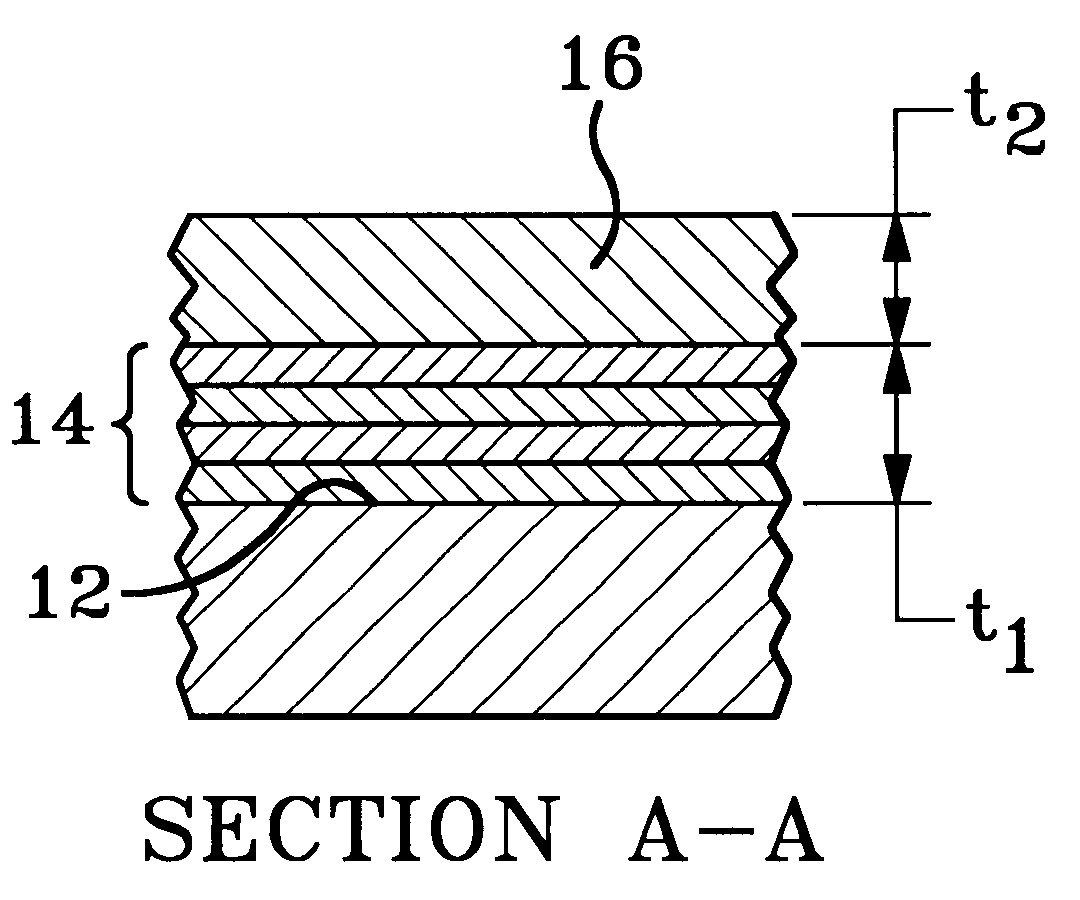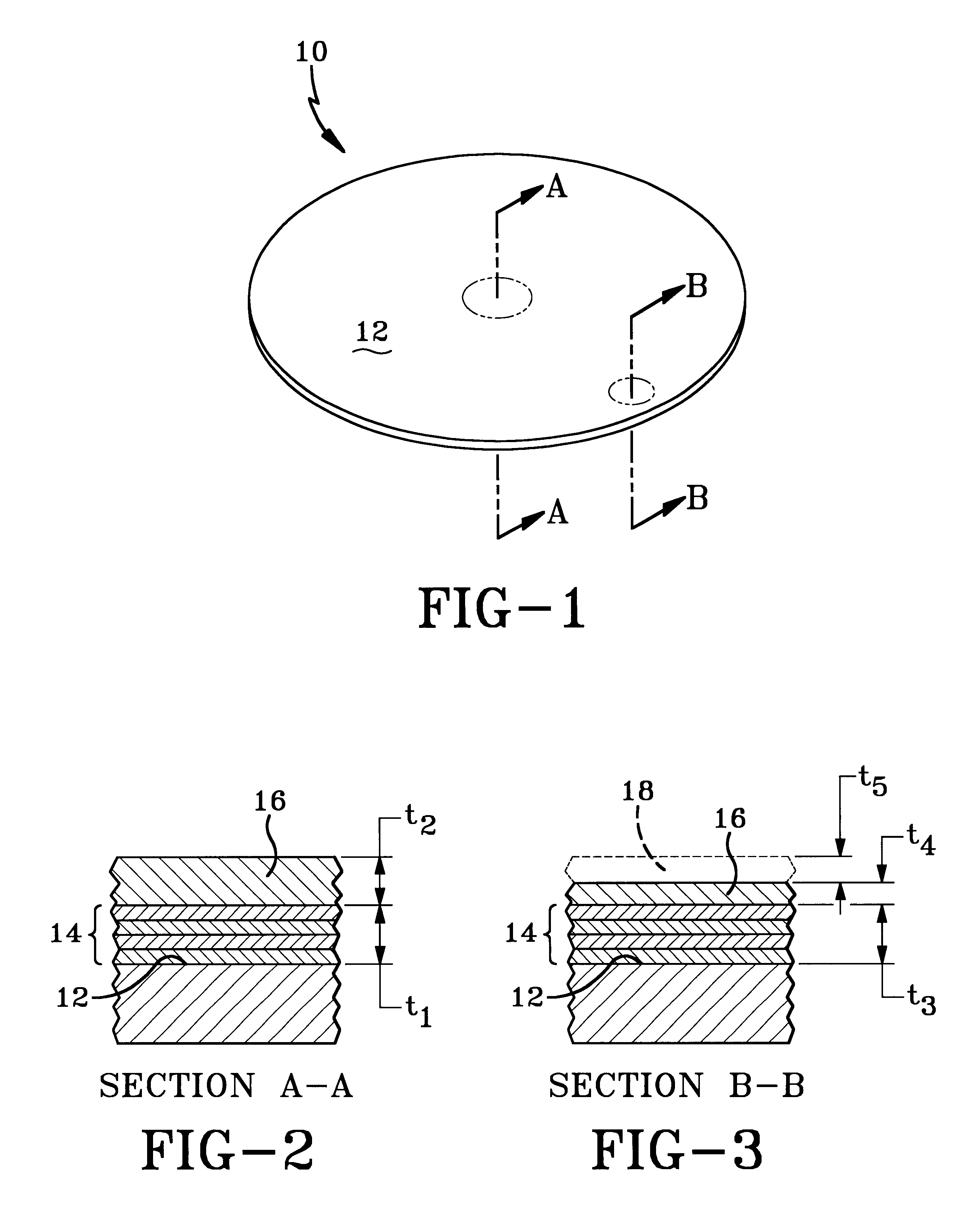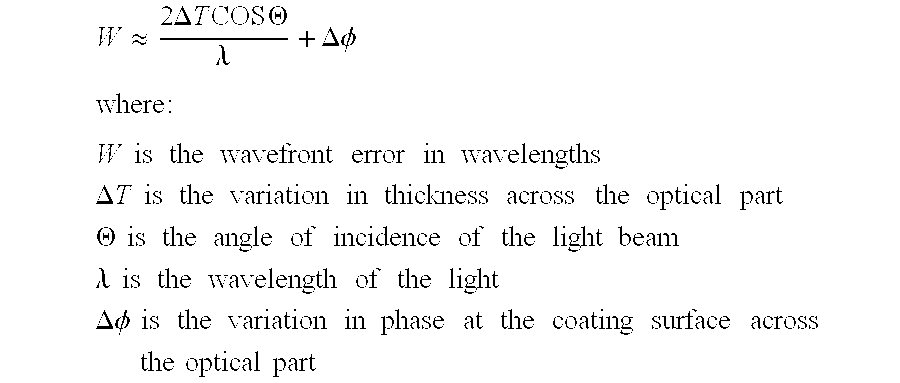Compensating layer to reduce wavefront errors in coatings on mirrors for optical systems
a technology of optical systems and compensating layers, applied in the field of optical systems, can solve the problems of difficult to provide adequate spacing between layers, difficult to achieve uniform deposition of multi-layer coatings on large optical components such as reflecting mirrors, and wavefront errors in optical beams reflected from reflecting surfaces, etc., to reduce or eliminate wavefront errors, reduce wavefront errors, and reduce wavefront errors
- Summary
- Abstract
- Description
- Claims
- Application Information
AI Technical Summary
Benefits of technology
Problems solved by technology
Method used
Image
Examples
Embodiment Construction
Referring to the drawing, FIG. 1 shows a reflecting mirror 10 having a reflecting coating composed of layers 14 and 16. These layers were deposited on the substrate surface 12. For example, the coating 14 may consist of a twenty-one layer coating composed of quarter-wave optical thickness alternating layers of titanium dioxide and silicon dioxide. The alternating layers of the reflection coating are deposited in a manner well known in the art, for example by electron beam deposition or by sputtering. It will be appreciated by those skilled in the art that due to the geometry of the coating chambers used for depositing materials on optical elements, such as reflecting coating of the foregoing design, non-uniformities in coating thickness can occur across the surface of the coated optical element, for example across the surface of the mirror 10. Thus, the thickness of each layer at location B is slightly different than the thickness at location A. Principally, such errors are due to t...
PUM
| Property | Measurement | Unit |
|---|---|---|
| thickness | aaaaa | aaaaa |
| thickness | aaaaa | aaaaa |
| wavelength | aaaaa | aaaaa |
Abstract
Description
Claims
Application Information
 Login to View More
Login to View More - R&D
- Intellectual Property
- Life Sciences
- Materials
- Tech Scout
- Unparalleled Data Quality
- Higher Quality Content
- 60% Fewer Hallucinations
Browse by: Latest US Patents, China's latest patents, Technical Efficacy Thesaurus, Application Domain, Technology Topic, Popular Technical Reports.
© 2025 PatSnap. All rights reserved.Legal|Privacy policy|Modern Slavery Act Transparency Statement|Sitemap|About US| Contact US: help@patsnap.com



